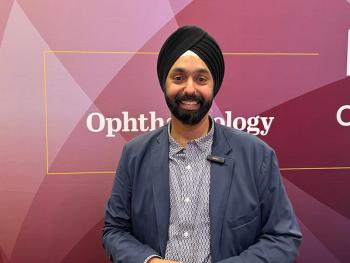
Vision simulator provides preoperative glimpse at postoperative eyesight
Holographic technology offers after-surgery glimpse for surgeons, patients.
Reviewed by Koray Kavakli, MS, and Hakan Urey, PhD
A holographic vision simulator device designed for patients with
Technologies such as retinoscopy, aberrometry,
Related:
“Holography is considered the ultimate display technology that can offer natural 3-dimensional vision with all required focus and depth cues,” said Koray Kavakli, MS, a student, and Hakan Urey, PhD, a professor of electrical engineering, both from the Department of Electrical Engineering and the Translational Medicine Research Center at Koc University in Istanbul, Istanbul, Turkey.
Holography, Kavakli pointed out, is the only technology that can digitally control the phase, size, and shape of a light beam entering the pupil.
In this study, the 10 patients with varying degrees of cataracts underwent ocular examinations before the simulator was tested. They wore the holographic vision simulator on their heads during the experiments.
The holographic screens detect solid noncataractous areas in millimeter-level accuracy on the crystalline lens by directing a light beam that shapes the exit pupil by using the pupil tracking.
Related:
The simulated vision the patients achieve, said Kavakli, facilitates their choice of different IOL options offered preoperatively and correction of any refractive errors.
Results
“All patients had better visual acuity when tested in our holographic simulator compared to the conventional eye examination,” Kavakli said. “Patients without retina diseases exhibited 20/40 vision, whereas the patients with age-related macular degeneration or glaucoma had 20/70 vision.”
Based on the results, the investigators concluded that the vision simulator can predict the patients’ postoperative visual acuity before they undergo cataract surgery.
“Our augmented-reality display device overperforms the existing vision simulators,” they commented. “This device also can be used for matching the right patient to the right choice of intraocular lenses, such as trifocal, monofocal, or extended depth-of-focus IOLs.”
Related:
The investigators also noted that the technology can be used with corneal diseases such as keratoconus that cannot be corrected with contact lenses and require surgery.
----
Koray Kavakli, MS
E: [email protected]
This article is adapted from Kavakli’s presentation at the Association for Research in Vision and Ophthalmology 2021 Annual Meeting. He has no financial interest in this subject matter.
Hakan Urey, PhD
E: [email protected]
Urey has no financial interest in this subject matter.
Newsletter
Don’t miss out—get Ophthalmology Times updates on the latest clinical advancements and expert interviews, straight to your inbox.















































.png)


